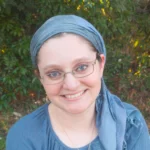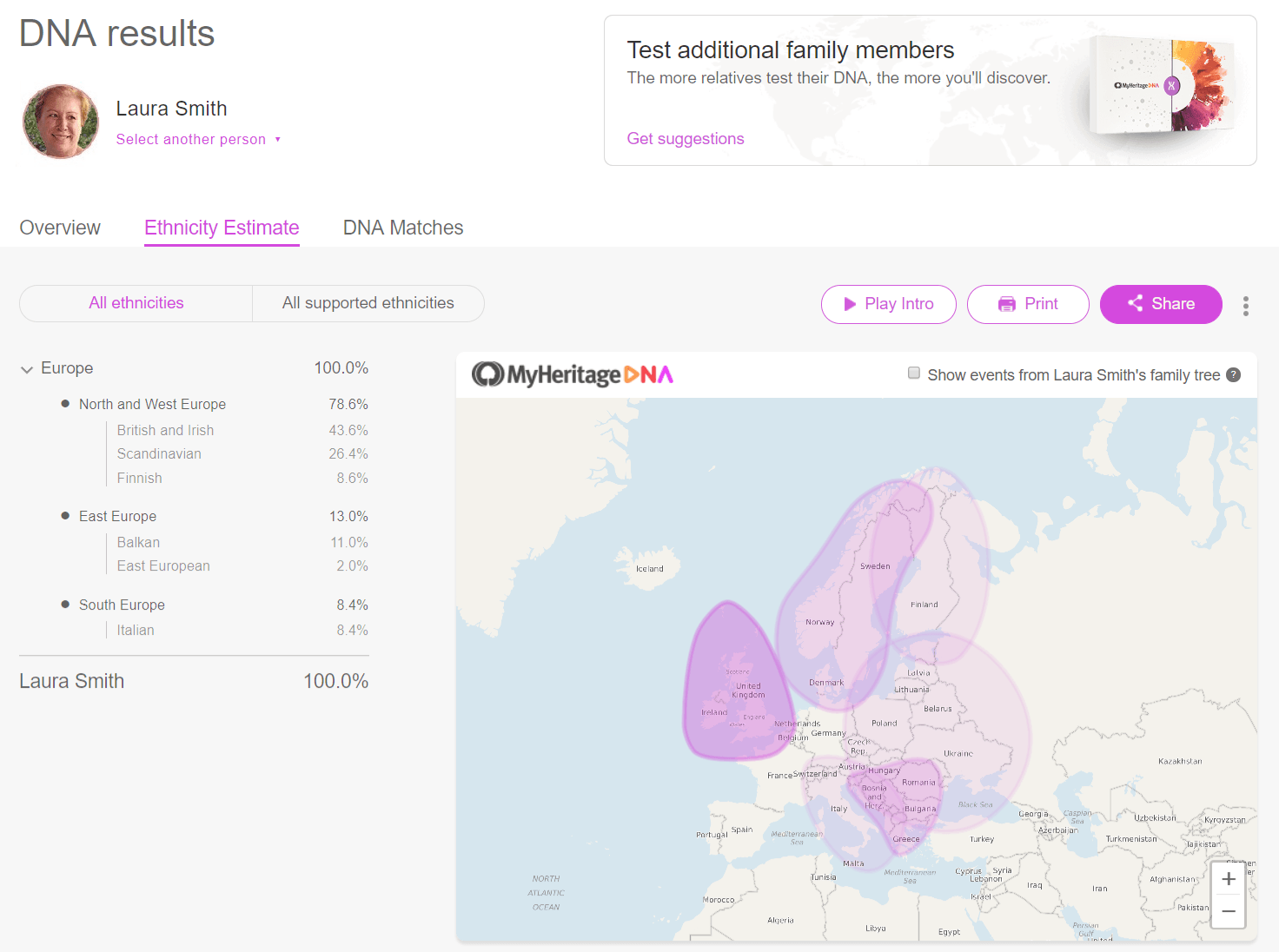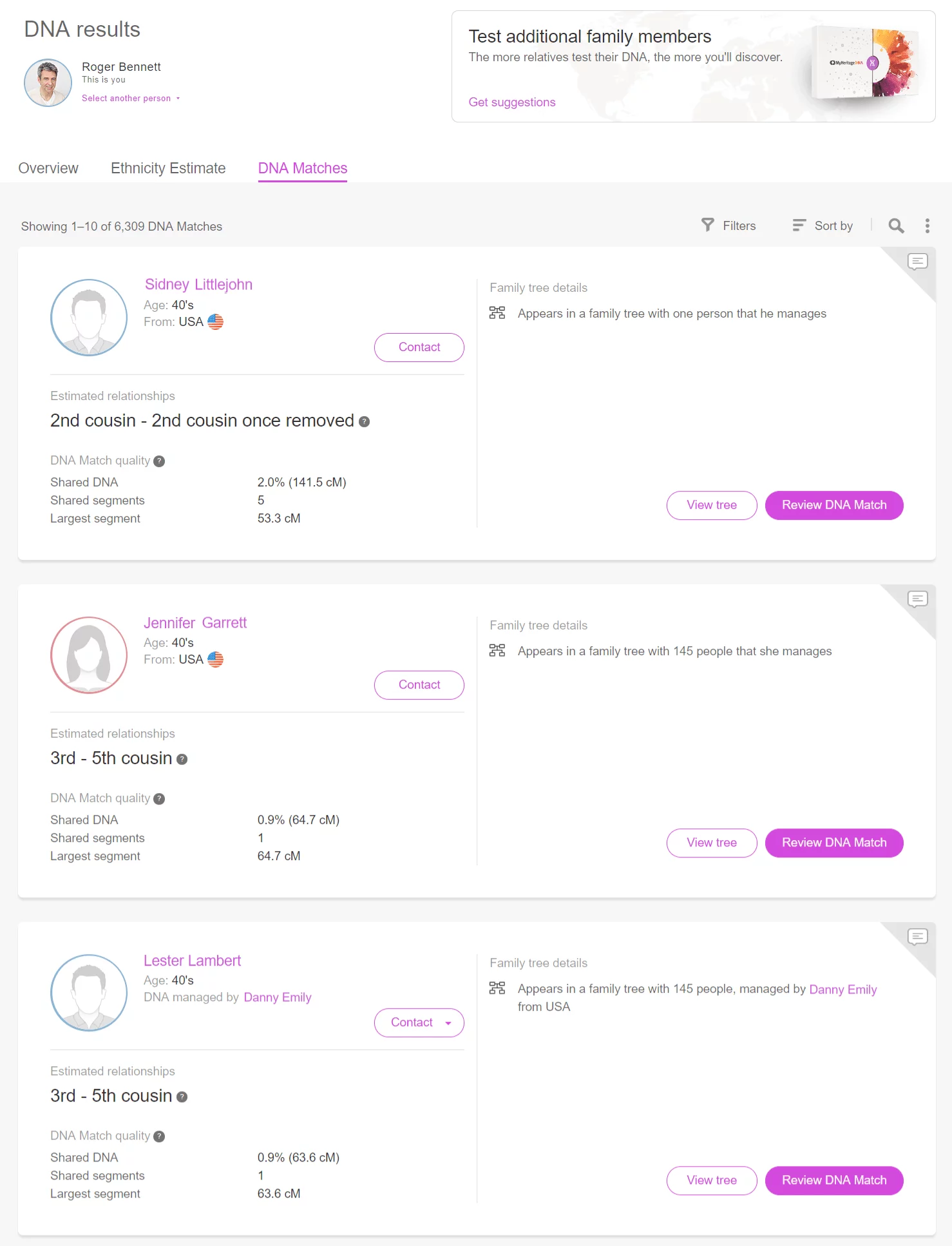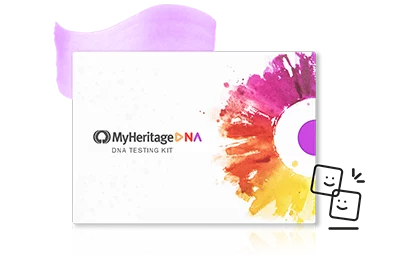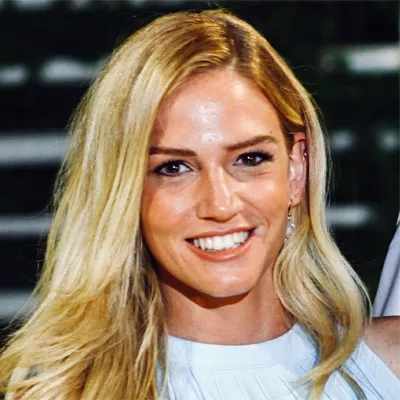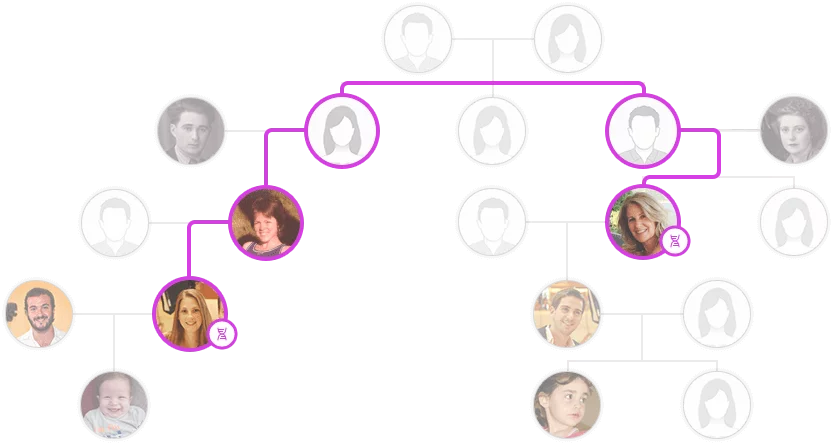
Congratulations, your DNA results are here! You’re about to embark on an incredible journey of discovery.
Here’s what you can do now that your results are in:
1. Discover your ethnic origins
Learning where you come from can be an exciting and dramatic moment. MyHeritage has made this moment special for our users with a unique DNA reveal intro animation. The intro presents each ethnicity percentage with a musical accompaniment.

The email notifying you that your results are ready will take you straight to the intro. After watching it, you can learn more about each ethnicity by clicking “View full ethnicity estimate” at the top right corner of your screen.
On the next page, you’ll see a full list of your ethnicity percentages along with a map indicating the areas where each ethnicity originates. Click on an ethnicity on the list or the map to learn more about it.
You can also share your ethnicity estimate with your friends and family via social media from this page. Just click the “Share” button on the upper right corner.
2. Find new family members
Now it’s time to meet your DNA matches.
On the DNA Matches page, you’ll find a list of your DNA matches starting with your closest match.
You can use sort, filter, and search the results to find the match you’re looking for.
Each DNA match displays the percentage of shared DNA and the estimated relationship based on that percentage. MyHeritage can also provide some clues to help you figure out exactly how you’re related to each match, including the following features you can access directly from your DNA Matches page:
Theory of Family Relativity™: This unique and highly useful feature corroborates data from all the sources available at MyHeritage to build credible theories about how you might be related to your matches. The algorithm searches through other family trees on MyHeritage and the 10.2+ billion historical records, and if it finds a connection between you and the match, it will deliver this information straight to the DNA match card. You’ll find it below the DNA match’s basic information. You can click the “View theory” link to see how MyHeritage calculated the theory (including multiple paths if there are more than one).
Shared ancestral surnames: The estimated relationship can’t tell you what side of the family your DNA match is on, but shared ancestral surnames can offer valuable clues. Seeing which surnames you share with this match can help you trace the path between you and the match on your family tree.
Smart Matches™ within their family tree: Confirming Smart Matches™ between family members on your tree and the same people on theirs might help you connect the dots and figure out how the match is related to you, since the match is already connected to his or her family members on their own family tree.
Shared ancestral places: Knowing where both of you come from can provide more clues, especially if different sides of your family come from different places.
The more information you have in your family tree, the more clues MyHeritage will be able to provide as to the connections between you and your DNA matches.
If you’d like to contact a DNA match, click the “Contact” link below their basic information. This will take you to your MyHeritage inbox, where you can write them a message.
3. Explore the advanced DNA tools
If you want to dig even deeper, you can use the Chromosome Browser and AutoCluster tools to try and figure out how a match is related to you.
The Chromosome Browser allows you to view which segments of DNA you share with up to 7 DNA matches. Comparing and contrasting shared segments can help you figure out which common ancestor you might share. For example, if your mystery cousin shares some DNA segments with your mother, but none with your father, that tells you that they are most likely on your mother’s side. The more DNA matches you have with known family members, the more you will be able to learn about DNA matches whose connection to you is unknown.
AutoClusters helps by grouping your DNA matches according to the DNA they share (and subsequently, the likelihood that they descend from a common ancestor). So if, for example, the mystery cousin appears in the same autocluster as your maternal great-aunt, you know that it’s likely that cousin shares an ancestor with her.
Both of these tools can help you hone in on the likely relationships between yourself and your DNA Matches. This not only helps you create new family connections, it can help you break through brick walls in your genealogy research.
4. Test other family members
As more and more people take DNA tests with MyHeritage, you’ll receive more DNA matches that can help you in your research. However, if you’d like to take a more proactive approach, consider encouraging other family members to take a DNA test. Having more DNA data from close family members gives you more information to work with — and sometimes you just need one more piece to complete the puzzle.
